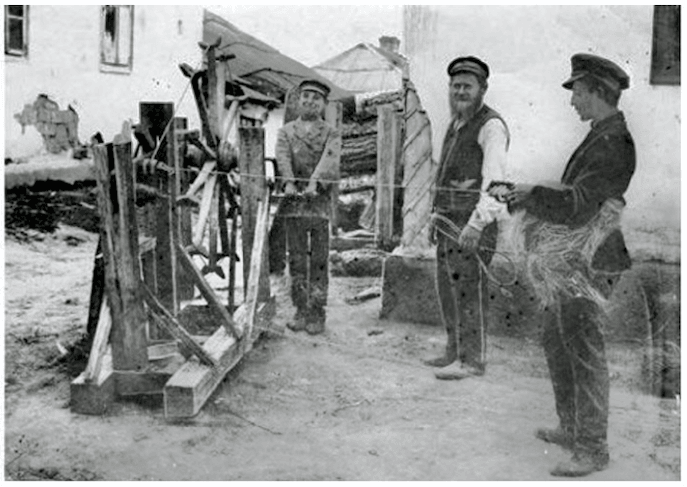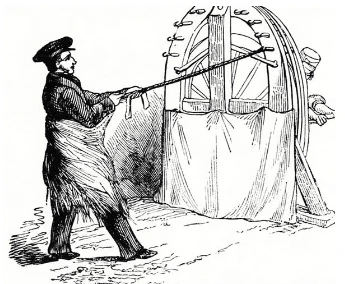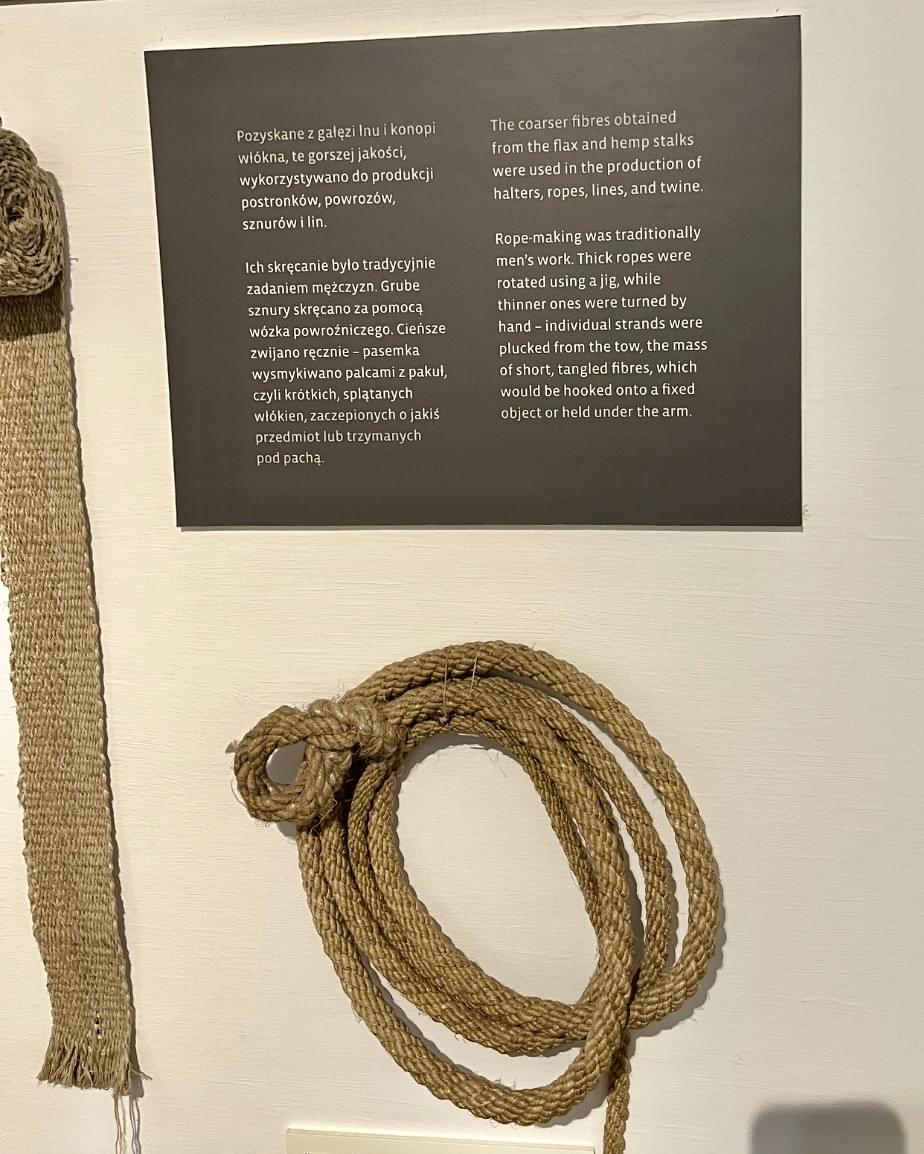
The photo above is from the 1912 An-Sky ethnographic expeditions and shows rope-makers (דער שטריקדרײער or der shtrikdrayer) in the village of Mezhirech.

Rope making is an ancient art. The 1842 print above from the World History Archive, shows rope being spun from heckled hemp carried round the spinner's waist. A few fibres were attached to the spinning wheel at one end of the rope walk. As the wheel turned, the spinner walked backwards, taking threads of hemp and joining them in as necessary.
A story from the memory book from Gombin, Poland before the second World War not only shows how widespread the occupation of rope-making (Gombin, Poland (present day Gąbin, Poland) is about 530 miles from Mezhirech, Ukraine (present day Mezhyrich, Ukraine) where An-Sky's team recorded the rope-making scene above in 1912) was in the shtetls but also perfectly describes the photo from An-sky expeditions:
Mordkhele, the Rope Maker (Mordkhele - shtrikmacher)
I knew Tevya Ropemaker, or Tevya Ropetwister, as the Gombin jokesters used to call him, because in order to make the ropes he had a kind of “machine” which twisted the linen fibers into all kinds of ropes, from thin strands to thick ropes.
His workshop was in the middle of Mesim Street during the summer months. He used to station his son Mordekhai at one end of the street (according to how long he planned to make the rope), would place a “machine” in his hand, to which he attached the long fibers into which he had twisted his “twister” and gave his son signals: “Ho! Ho-ho!” Then he would approach the boy. The wheel turned and by the time he reached his son the rope would be made.
excerpt from : https://www.jewishgen.org/Yizkor/gombin/gom038.html (present day Gąbin, Poland):

A photo from the Ethnographic Museum in Krakow, Poland. This rope was made on a machine similar to the one documented by the the An-Sky surveys. The legend above it also mentions rope-making was a man's occupation. We write more about hemp and its various folk applications in our book Woven Roots.
